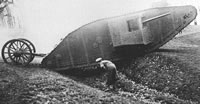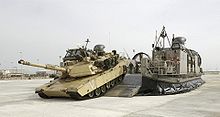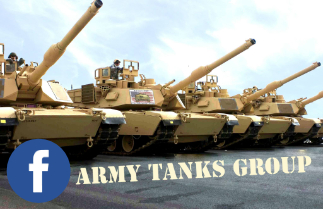Last updated on June 14th, 2023 at 07:50 pm

Tanks.net holds a massive collection of military tank specifications ranging from World War I, starting with history of army tanks, through WWII to present day battle tanks.
You will also find army tanks from the First World War, Second World War, Vietnam War, military tanks, modern army tanks, 21st century tanks, anti-tank weapons and details of famous army tank battles and tank generals.

Military tanks first appeared in World War One, but their potential was not fully exploited until World War Two when modern armored fighting vehicle tactics could be said to have been born. Since then no major army in the world would be able to exist without the use of army tanks.
Army Tanks Facebook Group
Discussions about tanks and related armored fighting vehicles and weapons. Post your own tank pictures, tank and armor images past, present and future…

Join FB Group
All tanks share the same three basic characteristics: They are covered with armor for protection, they can move, and they can fire weapons.
Tank development has consisted of making changes in order to improve protection, mobility and firepower.
Different types of armor, including modern modular, composite and explosive reactive armor, have been developed in order to defend again ever-evolving anti-tank weapons.
Other changes in tank design have been made to increase the safety of the tank crew. For example, the engine of Israel’s Merkava main battle tank is located at the front of the tank, providing the crew with additional protection from a direct hit.
Improvements to engines and suspensions enable tanks to move faster over rough terrain.
Tank armament is constantly being upgraded; tank weapons have ranged from machine guns to missile launchers.
The designers of a tank must determine which is most important – mobility, armament or protection – and which of these three aspects can be sacrificed, as tank design involves balancing the three. For example, a heavily armored tank slower and less agile than a tank with lighter armor. However, the crew of a more lightly armored tank is at greater risk of being injured from a direct hit.
Sometimes, the focus on one characteristic can be taken to extremes. For example, Nazi Germany’s Maus Super Heavy Tank (which never got past the prototype stage) was so heavy that it couldn’t move off of level ground by itself or cross an unreinforced bridge.
Protection was so important to the designers of Sweden’s S-tank (Stridsvagn 103), which was developed in the 1960s, that they eliminated the turret so that the tank would be easier to conceal. This made it much more difficult to aim the tank’s main gun. (The main gun was fixed to the hull; to aim the gun, the driver had to move the whole tank.)
Military tanks have progressed from simple, lumbering armored boxes on tracks to fully fledged computerized army tanks that shift across the battlefield at great speed.
Today’s modern battle tanks can track multiple targets with the use of laser rangefinders and infrared night vision equipment, in all types of terrain and under all types of climactic conditions. They can distinguish friendly vehicles from hostile ones
Modern communication equipment makes it easier coordinate large scale tank operations.
Gun stabilization systems allow modern military tanks to fire accurately while on the move.
Each decade since the Second World War, people have predicted the demise of the army tank as a valid tool of war, yet tanks remain a mainstay of the battlefield with infantry support.
It is more than likely that military tanks will remain in current armies and any army of the future, in one form or another. As long as there are land wars to be fought – army tanks will be here to stay.
Sources
The information on Tanks.net has been derived from a variety of sources. After being analyzed, the information from these sources has been presented here on Tanks.net in a way that should provide you with a good, clear understanding of the history, technology and use of military tanks and anti-tank weapons.
Sources include:
Compared and Contrasted, Tanks from World War I to the Present Day, by Martin J. Dougherty
Tanks of World Wars I and II, by George Forty
The Illustrated Encyclopedia of the World’s Tanks and Fighting Vehicles, by Christopher F. Foss
Jane’s Tanks and Combat Vehicles Recognition Guide, by Christopher F. Foss
The Essential Vehicle Identification Guide, Postwar Armored Fighting Vehicles 1945 – Present, by Michael E. Haskew
Brassey’s Modern Military Equipment, Anti-Tank Weapons, by John Norris.
Last but not least, if you have time please checkout our buddy Mart’s military Redbubble page:
https://www.redbubble.com/people/MilitaryMart/

